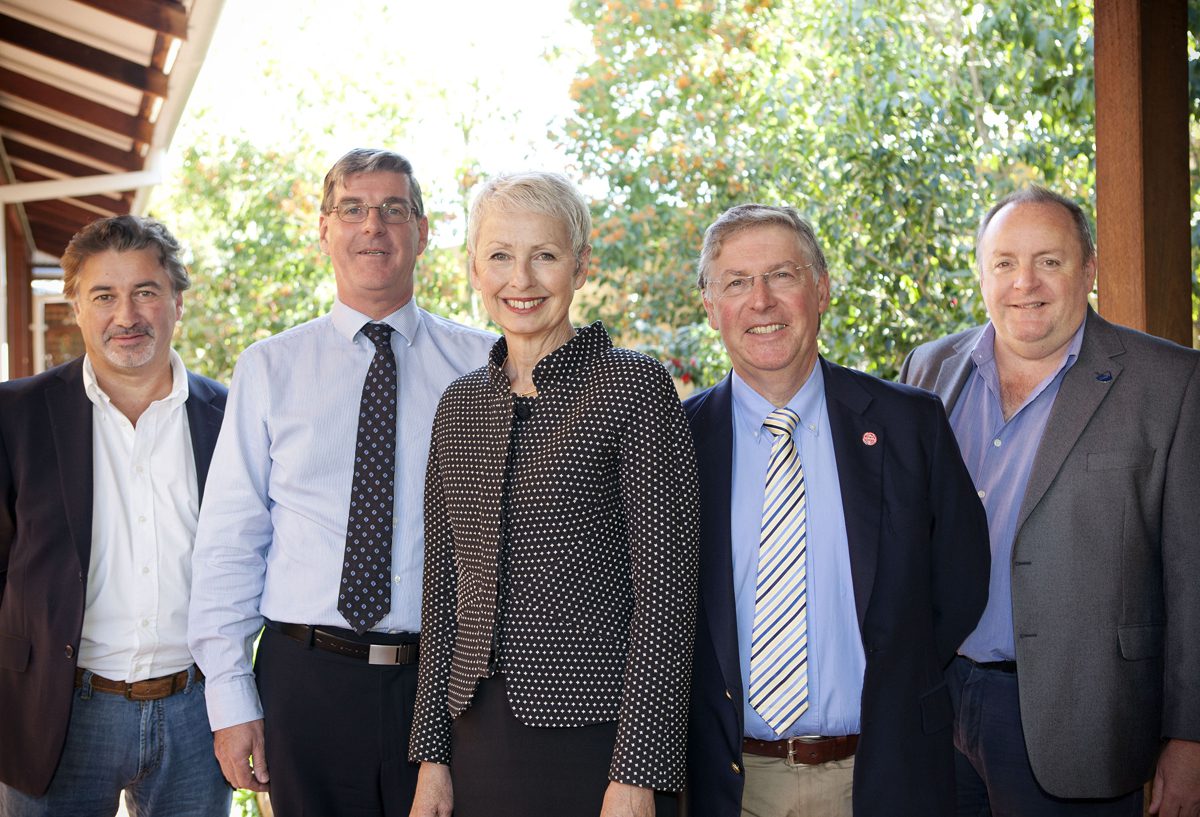Top astronomers and engineers from nine countries will meet in Perth this week to plan for pre-construction of the Square Kilometre Array (SKA) at The Path to SKA-low workshop.
Hosted by the International Centre for Radio Astronomy Research (ICRAR), the workshop has attracted more than 75 researchers from Australia, India, Italy, Malta, New Zealand, The Netherlands, South Africa, the UK and the US.
ICRAR Deputy Director and workshop organiser, Professor Peter Hall, said the agenda included the design and construction of antennas to allow the SKA to detect low-frequency radio waves from objects throughout the Universe (SKA-low).
“With new technology and signal processing techniques, flashing radio sources, called pulsars, and other fast, ‘transient’ radio sources could be better detected using lower frequency radio telescopes,” Professor Hall said.
“This makes SKA-low an even more essential part of the SKA as a whole.
“Given ICRAR’s strong hands-on international collaborations and our leading role in low-frequency pathfinders for the SKA, such as the Aperture Array Verification Program and the Murchison Widefield Array, we are well-placed to host a meeting that will get the ball rolling on plans for this part of the telescope.”
Professor Hall said the low-frequency portion of the SKA would observe the Universe at longer wavelengths than more familiar dish antennas operating at higher frequencies.
“A major goal of SKA-low is to observe the first structures in the very distant Universe as they formed. ICRAR researchers have also recently shown the importance of SKA-low in observations of the changing, or dynamic, radio sky,” he said.
“Australia, together with New Zealand, is bidding to host the SKA, which requires an extremely radio-quiet location. SKA-low will be particularly sensitive to radio interference and a location like Australia’s candidate core site, in WA’s Murchison, will allow a high-performance, cost-effective SKA-low.”
Professor Hall said a number of engineers had also come to Perth armed with prototype SKA-low antennas to be tested alongside local designs in ICRAR’s laboratory at Curtin University.
“Since we launched ICRAR two years ago, we’ve been building expertise, not only in radio astronomy, but also engineering and ICT, all of which play an important role in the design, construction and eventual operation of the SKA,” he said.
“This puts us in an excellent position to contribute significantly to the international effort.”
ICRAR Science and Technology Advisory Committee Chair, Professor Ron Ekers, said ICRAR’s time-domain astronomy theme, which investigates rapidly changing radio sources, ties in very closely with the SKA-low developments.
“The wide field of view of the SKA and its sensitivity to time-variable phenomena opens up a new and almost unexplored research area,” Professor Ekers said.
General Director of ASTRON in the Netherlands and Chairman of the SKA Science & Engineering Committee, Professor Michael Garrett, said he hoped ICRAR would play a leading role in the SKA-low pre-construction phase.
“It is essential that the knowledge and expertise built up via the Murchison Widefield Array finds its way back into the international SKA project,” Professor Garrett said.
“SKA-low will address Nobel-prize winning science questions about the early Universe, and I’m convinced it will emerge as one of the dominant areas of astrophysical research over the next few decades.
“It’s great to see ICRAR, and indeed the Australian community as a whole, getting behind these efforts and becoming so heavily involved.”
Researchers at this week’s meetings will discuss the next steps required as the SKA project heads towards its pre-construction phase. This phase will see finalisation of the telescope design and the development of technology to a point where the telescope is ready for production.
For more information on the workshop see: www.icrar.org/news/ska-low
Contacts:
Andrea Barnard, Public Relations, Curtin University
Tel: +61 (0)8 9266 4241, Email: andrea.barnard@curtin.edu.au
Kirsten Gottschalk, Outreach Coordinator, ICRAR
Tel: +61 (0)8 6488 7771, Mobile: +61 (0)438 361 876, Email: kirsten.gottschalk@icrar.org
Professor Peter Hall
ICRAR Deputy Director | Curtin University
Tel: +61 (0)8 9266 7951, Mobile: +61 (0)400 801 531, Email: peter.hall@icrar.org
Professor Ron Ekers
ICRAR STAC Chair | CSIRO Astronomy & Space Science
Tel: +61 (0)8 9266 9716, Mobile: +61 (0)419 146 313, Email: ron.ekers@csiro.au
Professor Michael Garratt
ASTRON General Director | SKA Science and Engineering Committee Chairman
Mobile: +31 621 201 417, Email: garrett@astron.nl
ICRAR is a joint venture between Curtin University and The University of Western Australia.



